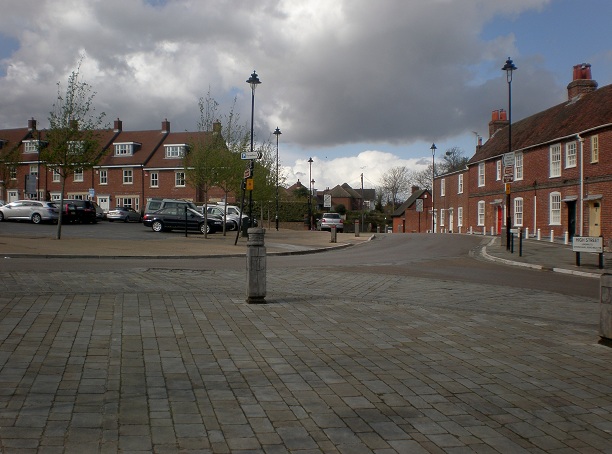By Tim Lambert
Early Hamble le Rice
Hamble began when a people called the Jutes settled in southern Hampshire. There is however no mention of Hamble in the Domesday Book.
For centuries most of the men in Hamble le Rice made their living from the sea, although a few worked as farmers. Hamble le Rice was a busy little harbour. Oysters were caught in the River Hamble. Also, crabs from western England and Ireland were brought to be fattened in the River Hamble.
For centuries there was a shipbuilding industry in Hamble le Rice. Some of the ships of the Royal Navy were built there in the 18th century.
Ropes were made in Hamble le Rice. The rope-making industry is remembered in the street name Rope Walk. Copper Hill Terrace was named after a copper, a container where tar was boiled. (The tar was used to waterproof rope and vessels). Well Lane gets its name from a village well.
At the beginning of the 12th century, a priory (small abbey) was founded at Hamble le Rice. The Church of St Andrew in Hamble was consecrated in 1109 but it was largely rebuilt in the 15th century.
On the doorway, cross-shaped marks are carved. It is said that in the Middle Ages, seamen from Hamble le Rice would carve a line on the church door and if they returned safely from a voyage they would carve another to make it a cross. Sadly, some did not return.
Hamble has the suffix le Rice. That may be a corruption of Hamble le Rise since the church was built on rising land. The Bugle Inn is said to date from the 13th century. The Whyte Hart dates from the 16th century.
About 1544 Henry VIII built a fort called St Andrews castle at Hamble le Rice. However, it was abandoned in 1642 and little now remains of it. Hamble House was built in 1740. (It was demolished in 1960).
Modern Hamble le Rice
A school opened in Hamble le Rice in 1841. In 1953 a new primary school opened and the old school became an infant school.
A training school, TS Mercury, moved to Hamble le Rice in the 1890s. However, it closed in 1968, and houses were built on the site.
The boys at the school worshipped at St Agatha’s Chapel. It was demolished but the name lives on in St Agathas Close. In 1894 Hamble le Rice was given a parish council. Crowsport Estate was built in the 1930s.
More modern streets in Hamble le Rice recall past buildings and people. Hardwicke Way is named after the Earl of Hardwicke, who had his seat at Hamble. Yorke Way is named after Sir Joseph Yorke, a famous inhabitant of Hamble le Rice in the late 18th and early 19th centuries. Grantham Avenue is named after Grantham Cottage. Sydney Avenue is named after Sydney Lodge (where the Duke of Hardwicke lived).
At the beginning of the 20th century, Hamble le Rice was still a small village with a population of only about 300. During the century the population of Hamble boomed. By the early 1960s, it was over 3,000.
In the 20th century, Hamble le Rice became known for yachting.
During the 20th century, Hamble le Rice became the centre of an aircraft industry, which led to the population of the village growing rapidly.
Aircraft were made at Hamble before 1914. However, Sir Alliott Verdon Roe, the first Englishman to fly, founded the Avro company in Hamble le Rice. From 1931 Pilots were trained at Hamble airfield. In 1960 a College of Air Training opened in Hamble. (The Duke of Edinburgh officially opened it in 1961. It closed in 1984).
Chadwick Way is probably named after Roy Chadwick, who designed the Lancaster bomber and was once based in Hamble.
In 1924 an oil terminal was built at Hamble le Rice. In 1985 Princess Diana visited Cougar Marine Boatyard.
Today Hamble le Rice is an attractive village known for leisure boating. Today the population of Hamble is about 4,000.
